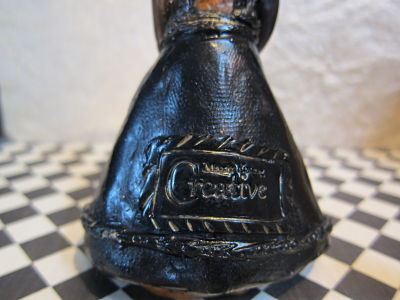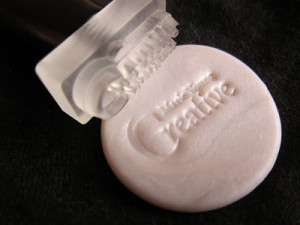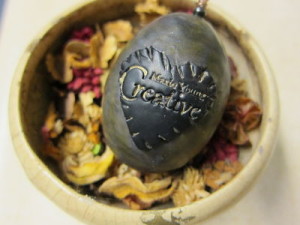
With a little creativity, an artist signature mark can become a clever part of the overall design, instead of an afterthought–something stuck on at the end.
For me this process also takes some of the stress out of “signing” my work. When I was a pre-teen, my sister and I took ceramic lessons. It is one of my favorite childhood memories. My teacher, also named Marie, was really patient and seemed to love working teaching.
The only thing I didn’t like was the fact that she made us sign our work. Those of us with horrible handwriting don’t look forward to signing our work! I was so afraid that my signature would ruin the piece. Paint seemed so permanent, but carving the signature into unfired greenware was even worse for me.
To this day, I feel weird “signing” my work, but recently I purchased a signature stamp from Jet Stamps to use with my larger pieces. I read about these amazingly detailed, yet tiny stamps in an issue of The Polymer Arts magazine. Sage Bray gave them a great review for use with polymer clay. They also work for ceramic artists.


Working with Jet Stamps was a great. I sent my sample text to them and they helped me fashion it into a 1-inch stamp. I’ve already incorporated my new stamped “logo” into the graphics for my YoungCreative Etsy shop.
The big difference with this stamp is that it is super deep and highly detailed. It is meant to be pressed into the clay not stamped on with ink. After my piece is baked, I highlight the words by adding paint to the baked design and wiping any excess.
At first, I was stamping straight into the back or bottom of my pieces, but it can be difficult to get a clean impression, so I started to rethink the how I could make the stamp part of the design. These examples show how I’ve created “patches” that I can to a finished piece. It works great on curved surfaces.
